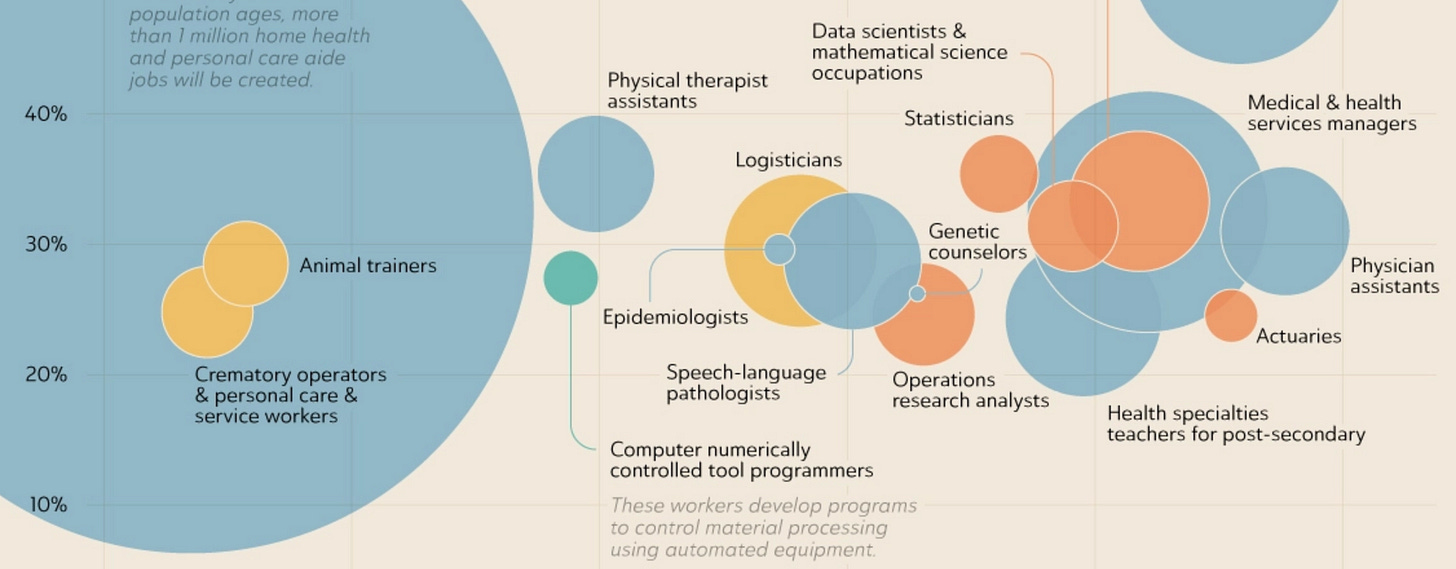#4 📈 Jobs for this technology will grow by 24.6% over this decade
And will most likely continue to do so for decades to come.
In 2013, UPS deployed ORION, an in-house solution that saved it:
38 million liters of gasoline
22,000 tons of CO2
50 million dollars that year
But also:
It delivered 350 000 more packages
Its 55,000 drivers drove 45 million fewer kilometers.
In the years that followed, these figures have been increasing. Especially the one on cost savings. And do you know how it did it?
By solving an optimization problem. In fact, ORION is the acronym for On-Road Integrated Optimization and Navigation.
So that's what we're going to look at in today's edition of Feasible:
The knowledge that makes it possible to solve these problems
What is an optimization problem
What you can do about it
Let's go for it!
🤔 The report
According to the US Bureau of Labor Statistics, about 12 million jobs will be created during the decade from 2020 to 2030 in the US.
12 million.
That's about 7.7% year-on-year growth, and several of these jobs are closely related to computer science and mathematics. You can see an excerpt in the image below:
On the vertical axis is the percentage growth in the number of jobs during this decade for different professions. On the horizontal axis would be the average salary, so the further to the right we go, the better salaries we'll find. You can see the full report here. (And I'm lucky enough to work at the intersection of several of those bubbles 😃 but that's another topic we'll cover.)
One of those bubbles has been the great forgotten one for decades. And you'll think "Borja, you're over the top". But no.
It's a bubble that has been here among us since we have computers and can compute faster than doing calculations by hand. Roughly since World War II. In times of scarcity, when there are many constraints and hundreds of thousands of items and people need to be managed and supplied, "a scientific method was born to provide executive departments with a quantitative basis for making decisions about the operations under their control."
Maybe you've already guessed which bubble I'm referring to: the Operations Research Analyst bubble.
And the fact is that it is Operations Research that makes it possible to solve the kind of problems that arise in any business, those of optimization. You remember UPS and its optimization problem, don't you? I haven't really told you about it, but it's the problem of managing tens of thousands of drivers to transport packages at the lowest possible cost.
🎯 Ok, but what is an optimization problem?
You're probably not UPS, a mega-company listed on the New York Stock Exchange, with more than 400,000 employees worldwide and generating profits of $10 billion a year.
But one thing I know for sure: you want to minimize costs, or maximize profits, or drive fewer miles to deliver packages... And all within the constraints of your business: you have the employees you have, the budget you have, the vehicles you have. And you are also trying to allocate resources manually, but you know that as certain variables grow, the problem becomes more and more complex and you sense that the process can be improved.
So that's an optimization problem. Specifically,




